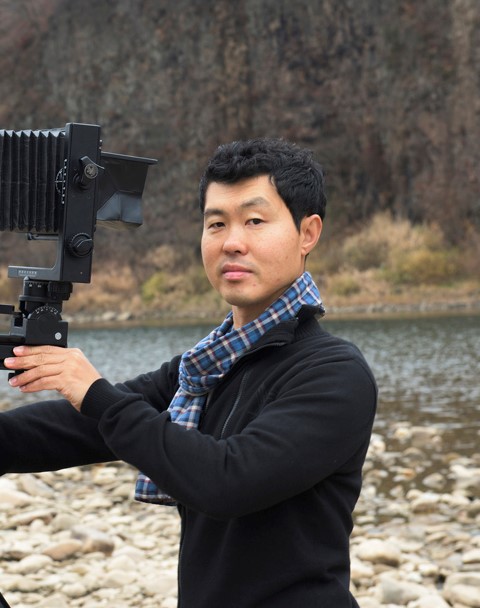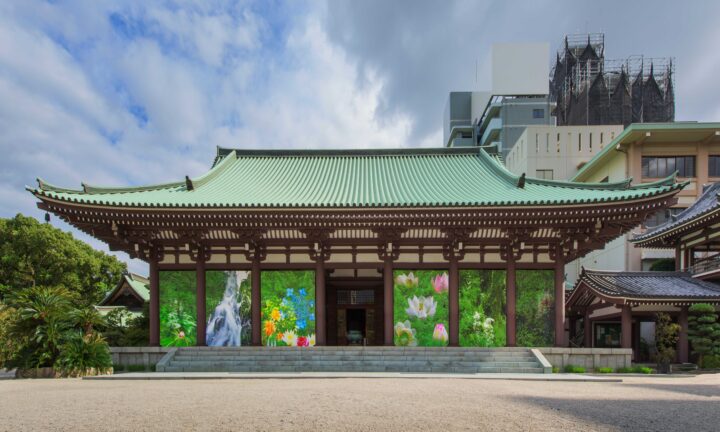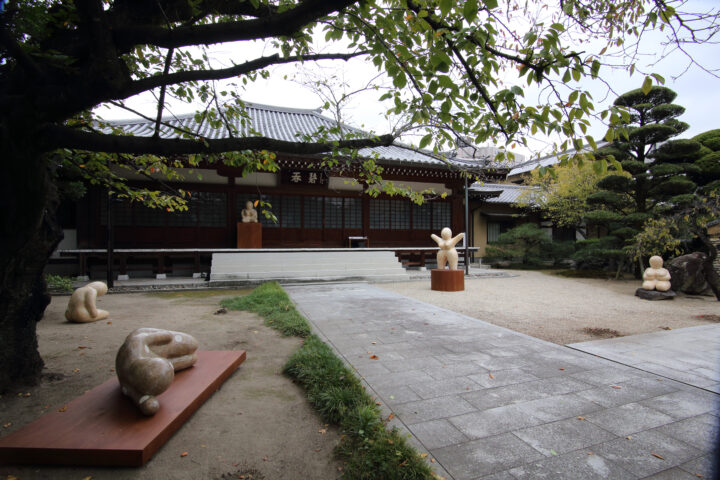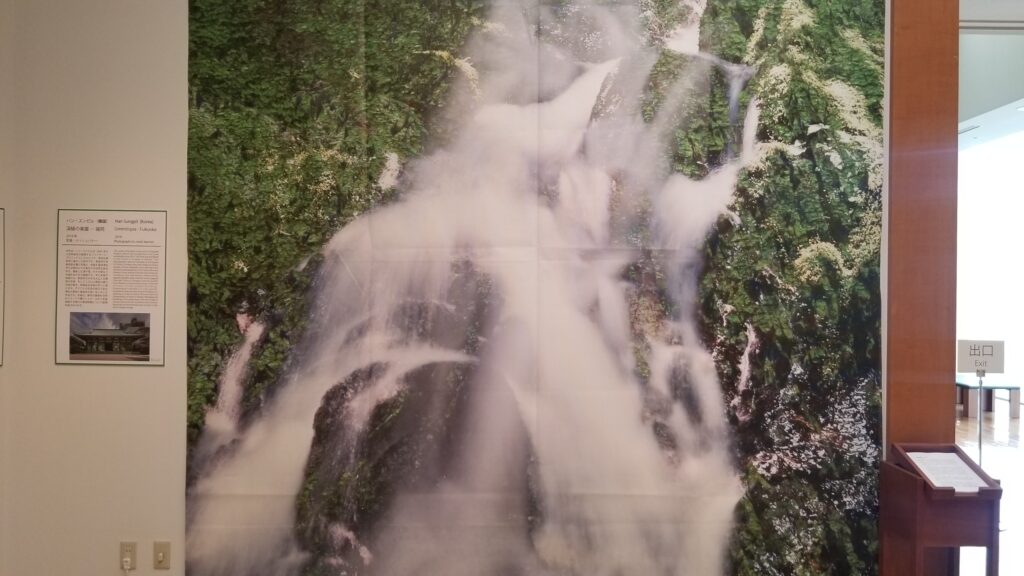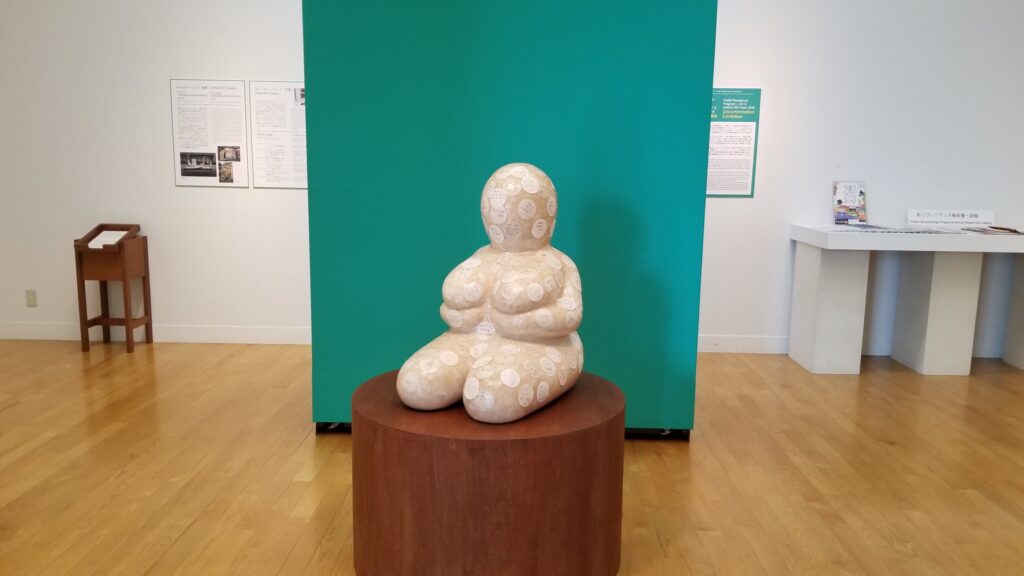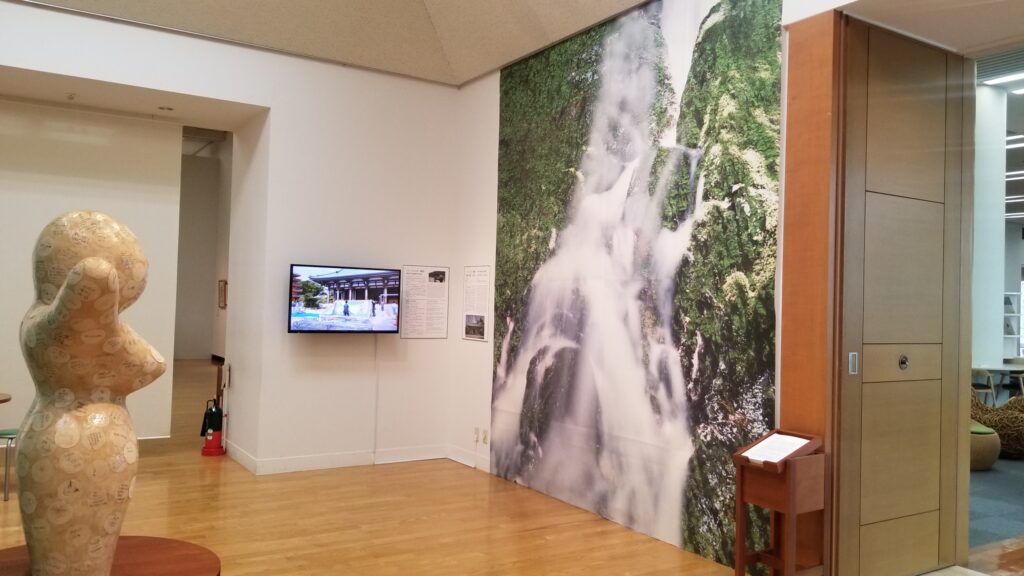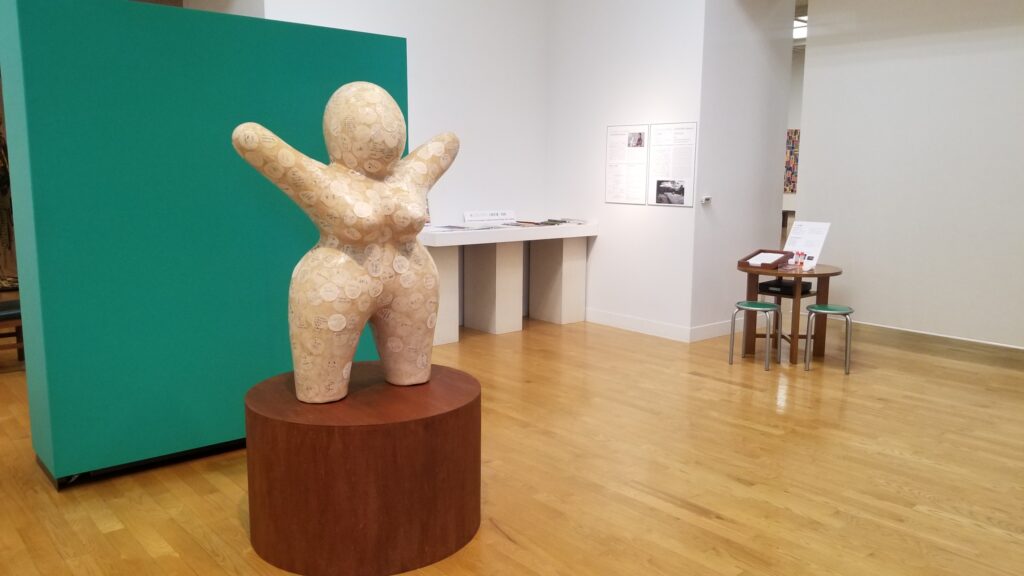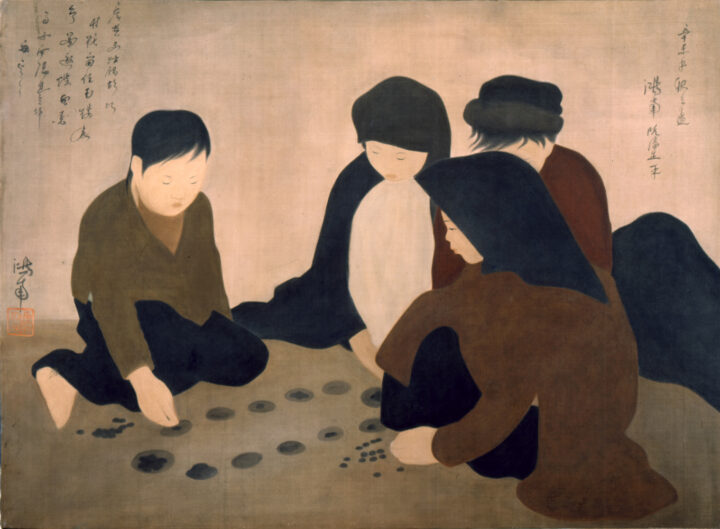
Room for FAAM Residence Program vol.3
- Period
- Dec 2, 2019 〜 Mar 17, 2020
- Venue
Asia Gallery
2019 Promoting International Exchanges through Artist in Residence Program, the Ministry of Cultural Affairs
FAAM Residence Program x Art in Hakata Old Town 2019
Documentation Exhibition
Since its inauguration in 1999, the Fukuoka Asian Art Museum (FAAM) has conducted its Residence Program, which invites artists and researchers from Asia every year to stay for a certain period and cultivate exchanges through collaborative art-making, workshops, talks and other programs with citizens. Through the Residence Program, FAAM intends to promote local people’s further understanding of Asian arts and cultures, which is expected for us to become a hub of artistic exchanges in Asia
This year, four artists in our Artist in Residence Program and Support Program participated in the exhibition, Art in Hakata Old Town 2019 (October 11-14) and displayed their works made during their residency period in the temples in the Hakata Old Town. The exhibition is an outdoor art event to display artworks in the historic areas in Fukuoka. Our resident artists have participated in the exhibition in spring and fall last year, and this year marked the third in the series.
Among four artists participated in the Art in Hakata Old Town exhibition, this section introduces three: Han Sungpil (Korea) and Le Hien Minh (Vietnam) from 2019 Residence Program and Candy Bird (Taiwan) from 2018 Residence Program, and show a part of their works through documentation photographs and videos. We hope this exhibition shows you our activities beyond the physical boundary of the museum.
Candy Bird [Taiwan]
[Residence Period: From February 18 to March 30 and from September 28 to October 16]
Candy Bird was born in 1982 and currently lives in Taipei. Since 2017, the artist has carried out the project, The Others, in various places in East Asia. The artist interviews the migrants or the people with a sense of alienation, invites them to write about their personal story, and turns it into a mural. During his stay in Fukuoka, Candy Bird found a local collaborator through an open call, and they communicated through interviews and email correspondences. In the end, the artist completed a series of murals based on the stories written by the collaborators.
The Others―Good Night, and Good Morning
2019
In Fukuoka, Candy Bird met his local collaborator, Che Yon-Ly, an art teacher at Fukuoka Corean Elementary School, through an open call, and cultivated their relationship through interviews and visiting the place she grew up. After returning Taiwan at the end of March 2019, they continued communicating through email until Candy Bird’s revisit to Fukuoka in September. Che, in the end, completed three texts based on her childhood memories and her on-going contemplation on her background, and Candy Bird created three murals out of her texts (one for Ryugu-ji Temple and two for the Hakata Sensho Market *See photos below). All the works are accompanied by QR code through which the visitors can listen to Che’s texts recorded by herself.
Ryugu-ji Temple Photo: Yatsuda Kimiko
Hakata Sensho Market
Hakata Sensho Market
Han Sungpil [Korea]
[ Residence Period: From May 14 to July 19 and from October 6 to 16]
Han Sungpil (b. 1972) is an artist based in Seoul. He is active in his home country of Korea and abroad including in Japan, having participated in the 2011 Yokohama Triennale and exhibited in the
Kiyosato Museum of Photographic Arts in 2018.
Sungpil stayed in Fukuoka between May and July. He has created photographic works and large-scale installations based on the theme of real/virtual, original/copy, as well as the history and its remains, which transforms our view on urban space through the dynamism of his work.
The artist has been traveling worldwide including Arctic and Antarctic for shooting his work
Greentopia-Fukuoka
2019
This work is the latest in the series of Façade Project, which Han Sungpil has continued worldwide since 2014. The work was exhibited in the Tocho-ji Temple in Hakata. The photographic banners installed on the façade of Tocho-ji Temple were the collage of various images, such as waterfall, moss, and trees that the artist photographed in the mountains and islands in and nearby Fukuoka City during his residency. The side banners featured the gigantic Buddha statue and five stories pagoda from the Tocho-ji Temples, and the golden lotus flowers in the entrance area invite the visitors to the temple building. Greentopia-Fukuoka is a site-specific installation featuring the history of Hakata as a gateway to Asia as well as the architectural characteristic of Tocho-ji Temple. Wrapping the building in the urban area with the image of nature, the work also questions the viewers about the environmental issues we face in the era of climate change.
Photo: Han Sungpil
Le Hien Minh
[Residence Period:From August 19 to October 24]
Le Hien Minh (b.1979) is an artist born in Hanoi and lives in Ho Chi Minh City. The artist graduated from the Ho Chi Minh City University of Fine Art in 1999, コ Corcoran School of the Arts in Washington D. C. in 2002, and Ohio’ s Art Academy of Cincinnati in 2004. She stayed in creates installation and sculpture works using
Vietnamese traditional hand-made Do paper, and has lately been working on the theme of female role in society.
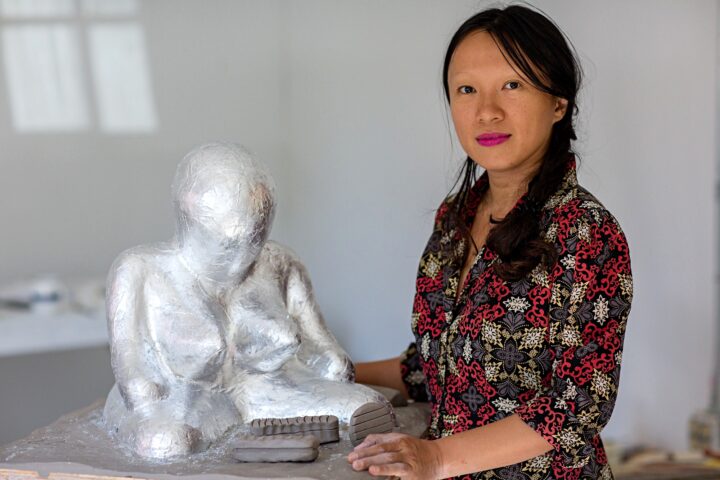
Molly Stinchfield courtesy of Art Omi
Five Questions
2019
Le Hien Minh has created sculpture and spatial installation works using Vietnam’s traditional handmade papers, Do, for sixteen years. Lately, the artist has specifically worked on the theme of the female body and their social status. This installation work consists of five female figures in various poses including “victory,” “rest,” “tiring,” “protection,” and “nurturing.” These poses depict specific emotional and mental statuses that we all share. The work was exhibited in the Myoraku-ji Temple in Hakata. The visitors were requested to write their answer to the five questions raised by the artist on a small round-shaped Do paper and paste it onto any of the five sculptures. Five female figures will then be completed as a participatory work that contains various thoughts and wishes of the visitors. One sculpture will be displayed along with the documentation materials, and the visitors are invited to join the work by providing their answers to the questions.
Photo: Yatsuda Kimiko
| Venue | Asia Gallery |
|---|---|
| Admission | Adult 200 JPY / High School&College 150 JPY / Free for Junior High School and Under |
| Organiser | Fukuoka Asian Art Museum |
| Contact | Tel: 092-263-1100 |

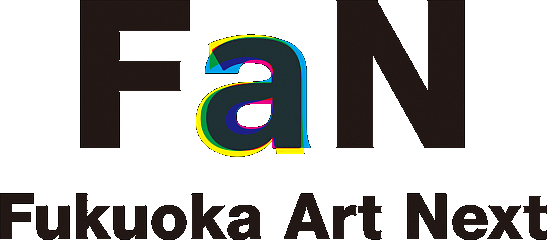
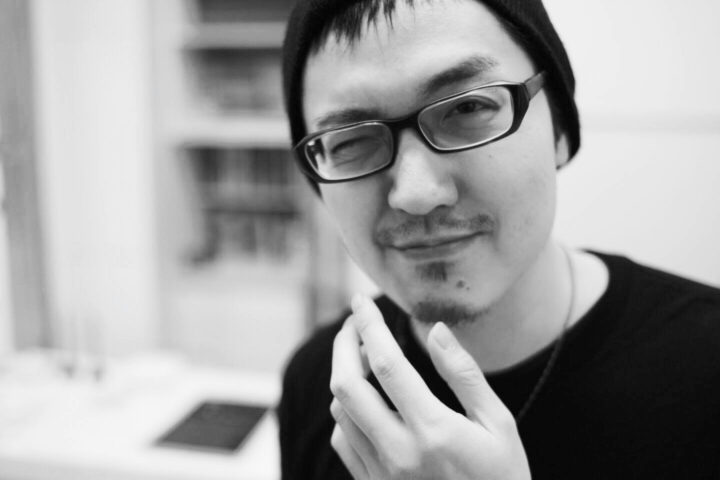
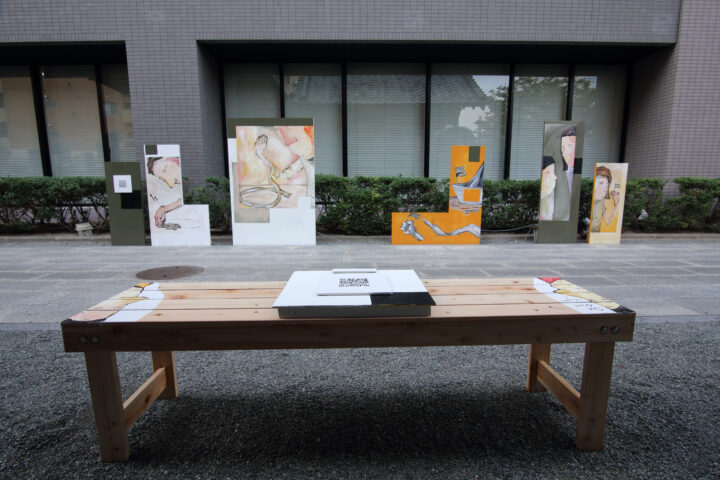
-720x487.jpg)
2-507x720.jpg)
